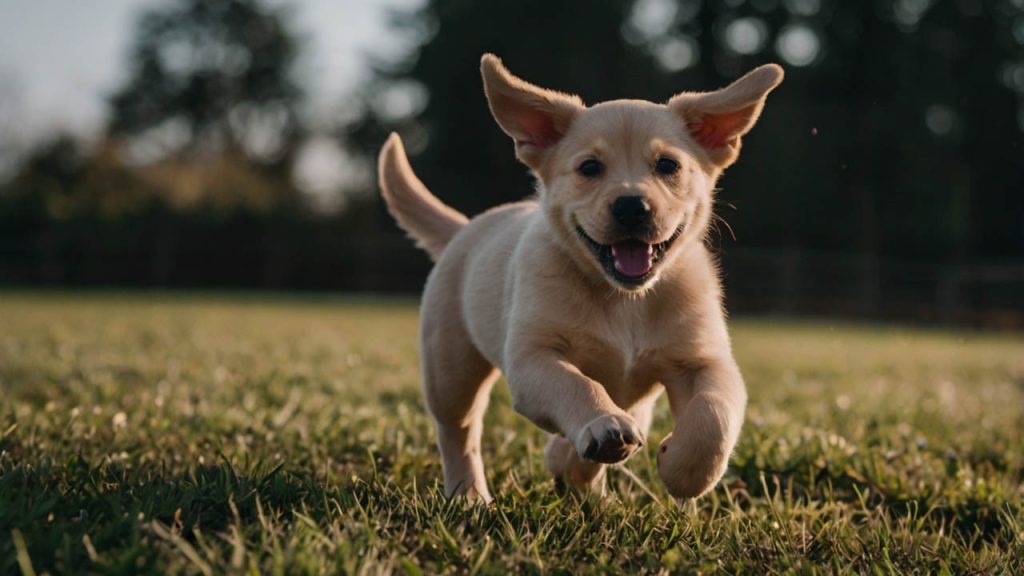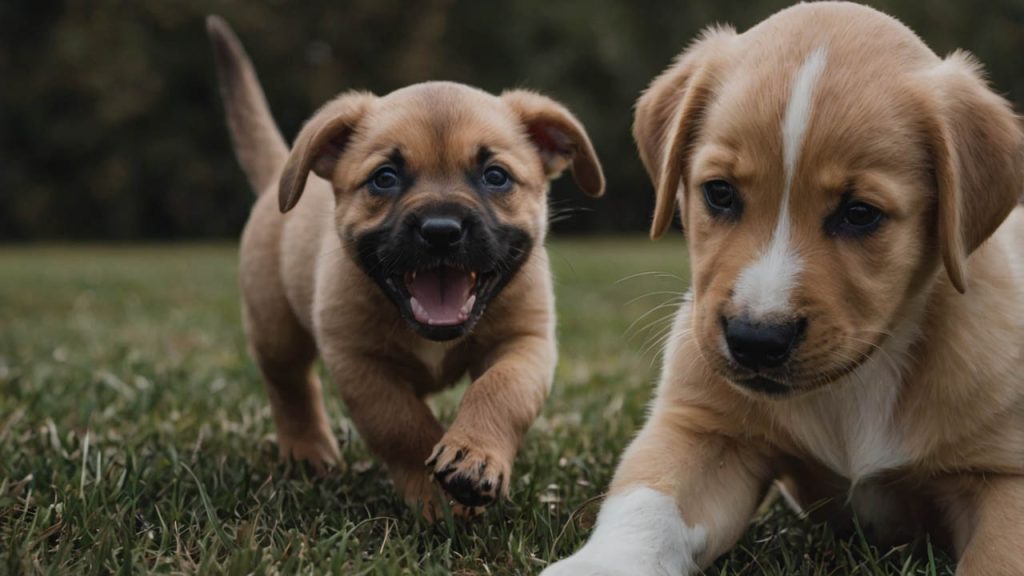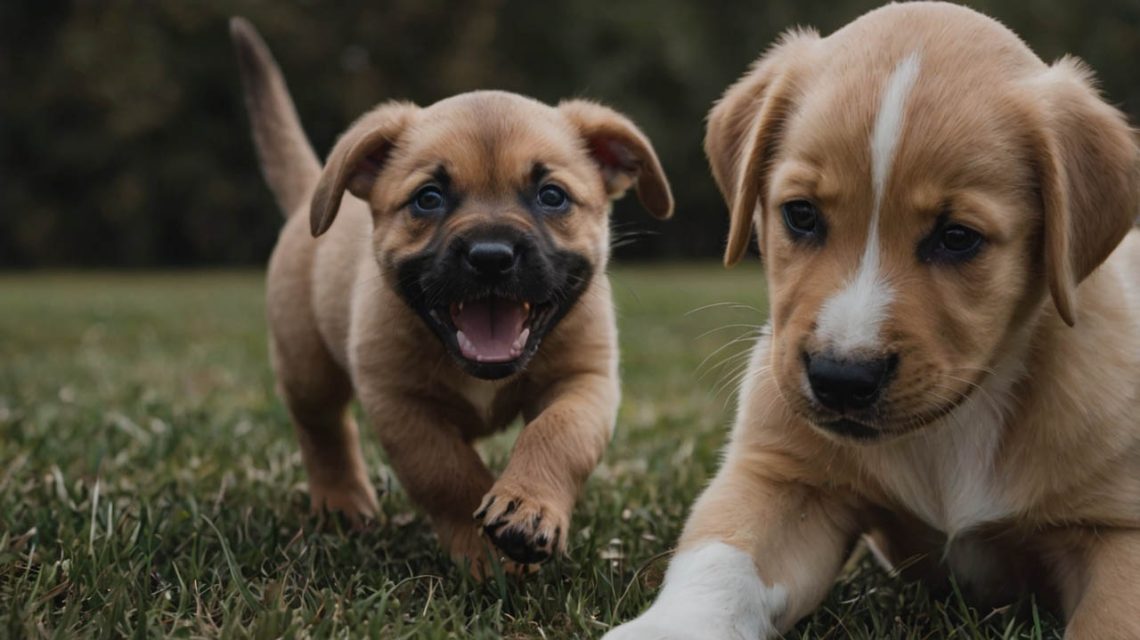Introduction: Solving Your Puppy’s Biting Problem Quickly
Understanding how to stop puppy biting is essential for every new puppy owner, as this natural behavior can quickly become problematic without proper intervention during the critical early months. According to the American Kennel Club, all puppies go through a biting phase between 3-6 months of age, with some breeds exhibiting more intense mouthing behaviors than others. Moreover, research from veterinary behaviorists indicates that puppies who don’t learn proper bite inhibition before 18 weeks of age are significantly more likely to develop aggressive biting behaviors as adult dogs.
The urgency of learning how to stop puppy biting becomes apparent when considering that sharp puppy teeth can cause painful injuries, particularly to children who naturally interact at the puppy’s eye level. Studies published in the Journal of Veterinary Behavior demonstrate that consistent bite inhibition training during the socialization period (3-14 weeks) can reduce inappropriate biting by 90% within just two weeks of implementation. Furthermore, addressing puppy biting early prevents the behavior from becoming an ingrained habit that requires professional intervention later.
Successfully implementing strategies to curb puppy biting requires understanding why puppies bite, recognizing different types of biting behaviors, and applying age-appropriate training techniques consistently across all family members. While biting is a normal part of puppy development used for exploration, play, and communication, teaching appropriate boundaries ensures your puppy grows into a well-mannered adult dog. Therefore, this comprehensive guide provides immediate solutions, long-term training strategies, and troubleshooting tips to help you effectively stop your puppy’s biting behavior.
Why Understanding How to Stop Puppy Biting Matters
Natural Reasons Puppies Bite
Before implementing how to stop puppy biting techniques, recognizing the underlying causes helps address the behavior effectively. Puppies explore their world primarily through their mouths, similar to how human babies use their hands. Subsequently, everything from furniture to human skin becomes a target for investigation through nibbling and biting.
Teething represents a major contributor to puppy biting between 3-6 months of age. As baby teeth fall out and adult teeth emerge, puppies experience significant discomfort and seek relief through chewing. Research indicates that teething puppies may bite up to 70% more frequently than non-teething puppies, making this a critical period for intervention.
Play behavior naturally involves biting among puppies, as they learn social skills through rough-and-tumble interactions with littermates. In their natural environment, puppies learn bite inhibition when siblings yelp and stop playing after hard bites. Furthermore, mother dogs correct excessive biting, teaching puppies to moderate their jaw pressure for appropriate social interaction.

Consequences of Unaddressed Biting
Understanding the importance of how to stop puppy biting early becomes clear when examining potential long-term consequences. Adult dogs who never learned proper bite inhibition pose serious liability risks, with dog bite claims averaging $50,000 according to insurance industry data. Additionally, many dogs are surrendered to shelters or euthanized due to biting problems that could have been prevented through proper puppy training.
Social development suffers when biting behaviors persist unchecked. Puppies who bite excessively often miss crucial socialization opportunities as people avoid interacting with them. This isolation can lead to fear, anxiety, and increased aggression, creating a cycle of problematic behaviors extending far beyond simple biting.
Family dynamics become strained when puppy biting continues without resolution. Children may develop fear of the family pet, while adults experience frustration and stress. Moreover, simple activities like playtime or grooming become battles, diminishing the joy of puppy ownership and potentially damaging the human-animal bond permanently.
How to Stop Puppy Biting: Immediate Solutions
The Yelp and Withdraw Method
The most effective immediate technique for how to stop puppy biting mimics natural canine communication. When your puppy bites, emit a high-pitched “yelp” or “ouch” to signal that the bite hurt. Subsequently, immediately withdraw all attention by turning away or leaving the room for 10-20 seconds, teaching that biting ends social interaction.
Consistency across all family members proves crucial for this method’s success. Everyone must respond identically to biting, using the same verbal cue and withdrawal duration. Research shows that puppies receiving consistent responses learn to moderate biting within 3-5 days, while inconsistent responses can actually increase biting frequency.
Timing your response correctly maximizes effectiveness. The yelp must occur within 1-2 seconds of the bite to create a clear association. Furthermore, returning too quickly after withdrawal may inadvertently reward the puppy with attention, while waiting too long breaks the learning connection.
Redirection Techniques
Providing appropriate alternatives forms a cornerstone of how to stop puppy biting strategies. Keep suitable chew toys within arm’s reach throughout your home, immediately substituting them when your puppy attempts to bite hands or clothing. This teaches puppies what they can bite while satisfying their natural chewing needs.
Toy selection significantly impacts redirection success. Puppies often prefer toys with varied textures that massage sore gums during teething. Rope toys, rubber toys with different surfaces, and soft plush toys provide options for different moods and teething stages. Additionally, rotating toys every few days maintains novelty and interest.
Praise and reward enthusiastic toy engagement to reinforce the redirection. When your puppy chooses toys over human skin, provide verbal praise, treats, or brief play sessions. This positive reinforcement strengthens the association between appropriate chewing and pleasant outcomes.
How to Stop Puppy Biting During Play
Managing Arousal Levels
Controlling excitement during play proves essential when learning how to stop puppy biting effectively. Monitor signs of overarousal including dilated pupils, excessive panting, and increasingly rough play. Implement mandatory calm-down breaks every 2-3 minutes during play sessions, preventing escalation into frenzied biting.
Structured play sessions teach self-control naturally. Use clear start and stop commands, immediately ending games when teeth touch skin. Resume play only after your puppy settles, reinforcing that calm behavior continues fun while biting stops it. Studies show puppies learn this association within 5-7 consistent training sessions.
Appropriate game selection reduces biting opportunities. Avoid wrestling or rough hand play that encourages mouthing. Instead, focus on fetch, hide-and-seek with toys, or training games that maintain distance between hands and teeth while providing mental stimulation.
Teaching Gentle Mouth Behaviors
Implementing how to stop puppy biting includes teaching controlled mouth pressure for unavoidable contact. The “gentle” or “easy” command helps puppies learn to moderate jaw pressure when taking treats or toys. Start with treats in closed fists, only releasing when puppies lick or gently mouth without using teeth.
Progressive training builds reliable gentle behaviors. Begin rewarding any reduction in bite pressure, gradually requiring softer and softer mouth contact. Within 2-3 weeks of daily practice, most puppies can take treats from fingers without any teeth contact.
Hand feeding meals provides multiple daily training opportunities. Deliver kibble piece by piece, requiring gentle taking before releasing food. This transforms necessary feeding into bite inhibition practice, accelerating learning through frequent repetition.
How to Stop Puppy Biting: Age-Specific Strategies
8-10 Weeks Old
Very young puppies require modified how to stop puppy biting approaches respecting their developmental stage. At this age, puppies are just learning to interact with humans after leaving their litters. Focus on gentle redirection rather than strong corrections, as harsh responses can create fear during critical socialization periods.
Socialization with other vaccinated, gentle adult dogs provides natural bite inhibition lessons. Well-socialized adult dogs correct puppy biting appropriately without causing trauma. Supervised interactions for 15-20 minutes daily can significantly reduce human-directed biting within one week.
Establishing routines prevents overtired biting common in young puppies. Puppies this age need 18-20 hours of sleep daily, and exhaustion leads to increased biting. Enforce regular nap times in crates or pens, preventing the cranky biting that occurs when puppies become overtired.
3-5 Months Old
Peak teething age requires specialized how to stop puppy biting techniques addressing discomfort. Provide frozen washcloths, ice cubes, or frozen rubber toys to numb sore gums. Research indicates that puppies with adequate teething relief show 60% less inappropriate biting than those without proper outlets.
Training classes during this period reinforce bite inhibition through peer interaction. Puppy kindergarten classes provide controlled environments for learning appropriate play. Additionally, professional trainers can identify and address concerning biting patterns early.
Consistency becomes increasingly important as puppies test boundaries during this age. All family members must enforce identical rules about biting, using the same commands and consequences. Mixed messages during this critical period can establish biting habits lasting into adulthood.
Training Techniques: How to Stop Puppy Biting
Positive Reinforcement Methods
Modern understanding of how to stop puppy biting emphasizes reward-based training over punishment. Rewarding calm, gentle behavior around hands increases these desired behaviors’ frequency. Studies consistently show positive reinforcement produces faster, more reliable results than correction-based methods.
Clicker training provides precise communication about desired behaviors. Click and treat whenever your puppy interacts with hands without biting, building positive associations. Within days, puppies begin offering calm behaviors to earn rewards, naturally reducing biting frequency.
Differential reinforcement teaches puppies that different behaviors yield different outcomes. Biting results in play ending and attention withdrawal, while gentle interaction brings treats, praise, and continued engagement. This clear contrast helps puppies make better choices independently.
Time-Out Procedures
Effective time-outs form important components of how to stop puppy biting protocols. Unlike punitive isolation, training time-outs briefly remove puppies from reinforcing situations. Use a designated boring area like a bathroom or playpen for 30-60 second time-outs following biting.
Implementation consistency determines time-out effectiveness. Every biting incident must result in immediate time-out without exception. Research shows that puppies receiving consistent time-outs reduce biting by 75% within one week, while inconsistent application may worsen behavior.
Avoiding emotional responses during time-outs prevents inadvertent reinforcement. Calmly say “too bad” or “time-out” while removing the puppy without additional talking or eye contact. Emotional reactions can become rewarding attention for some puppies, undermining the procedure’s effectiveness.

Environmental Management Strategies
Preventing Biting Opportunities
Successful how to stop puppy biting programs include environmental modifications preventing practice of unwanted behaviors. Use baby gates to control puppy access, preventing ambush biting of passing ankles. Additionally, tethering puppies to furniture with lightweight leashes during supervision prevents chase-and-bite games.
Clothing choices impact biting frequency significantly. Avoid loose, flowing garments that trigger prey drive and biting. Tight-fitting clothes provide fewer tempting targets while you work on training. Furthermore, removing access to particularly tempting items like shoelaces or dangling accessories reduces biting opportunities.
Strategic toy placement throughout living spaces ensures alternatives remain readily available. Place appropriate chew toys in every room, making redirection immediate and consistent. This environmental enrichment satisfies chewing needs while protecting human skin and belongings.
Creating Calm Environments
Managing environmental stimulation helps when implementing how to stop puppy biting techniques. Overstimulating environments with excessive noise, activity, or visitors increase arousal and biting. Create quiet zones where puppies can decompress, reducing stress-induced biting behaviors.
Routine establishment provides predictability that reduces anxiety-related biting. Consistent schedules for meals, walks, training, and rest help puppies understand expectations. Research indicates that puppies with structured routines show 40% less problematic biting than those with chaotic schedules.
Adequate exercise and mental stimulation prevent boredom-driven biting. Tired puppies bite less frequently and with less intensity. Provide age-appropriate physical exercise combined with puzzle toys, training sessions, and sniffing games for comprehensive stimulation.
Common Mistakes When Learning How to Stop Puppy Biting
Ineffective Punishment Methods
Many owners attempting how to stop puppy biting resort to outdated punishment techniques that often worsen the problem. Physical corrections like hitting, alpha rolls, or muzzle grabs can increase fear aggression and damage trust. Studies show punishment-based methods produce higher rates of adult aggression compared to positive training.
Yelling or loud verbal corrections often excite puppies rather than deterring biting. Many puppies interpret loud voices as play invitations, increasing arousal and biting intensity. Calm, consistent responses prove far more effective than emotional outbursts.
Inconsistent rules between family members sabotage training efforts entirely. If one person allows play biting while another forbids it, puppies cannot learn appropriate boundaries. Everyone must follow identical protocols for successful bite inhibition training.
Reinforcement Errors
Accidentally rewarding biting represents a common mistake when learning how to stop puppy biting properly. Pushing puppies away can become a fun game, reinforcing the biting behavior. Similarly, running away may trigger chase instincts, escalating biting into predatory sequences.
Giving attention to demand biting teaches puppies that biting achieves desired outcomes. Even negative attention like scolding can reinforce behavior in attention-seeking puppies. Complete withdrawal of interaction provides clearer communication about biting consequences.
Returning to interaction too quickly after biting dilutes the lesson’s impact. Puppies need sufficient time to calm down and process that biting caused play to stop. Rushing back to play may teaching puppies that brief biting pauses yield continued fun.
Professional Help Considerations
When to Seek Expert Assistance
Recognizing when professional help becomes necessary ensures safety while addressing how to stop puppy biting challenges. Any biting that breaks skin warrants immediate professional consultation, as this indicates inappropriate bite inhibition requiring expert intervention. Furthermore, biting accompanied by growling, stiff body posture, or resource guarding suggests developing aggression beyond normal puppy behavior.
Puppies over 5 months still exhibiting frequent, hard biting need professional assessment. By this age, most puppies should have developed significant bite inhibition. Persistent hard biting may indicate underlying issues requiring specialized intervention.
Family dynamics affecting training consistency may benefit from professional guidance. Trainers can educate all family members simultaneously, ensuring everyone implements protocols identically. Additionally, they provide objective assessment of progress and adjust techniques based on individual puppy needs.
Working with Professionals
Maximizing professional assistance effectiveness when learning how to stop puppy biting requires preparation and commitment. Document biting incidents including triggers, frequency, and intensity before consultations. This information helps trainers develop targeted intervention strategies.
Choose certified, force-free trainers using evidence-based methods. Credentials like CCPDT (Certification Council for Professional Dog Trainers) indicate formal education and testing. Avoid trainers promoting dominance theory or punishment-based techniques contradicting modern behavioral science.
Consistent implementation of professional recommendations determines success. Follow prescribed protocols exactly, maintaining detailed progress logs. Regular communication with trainers about challenges ensures timely adjustments to training plans.
Long-Term Success Strategies
Maintaining Progress
Sustaining improvements from how to stop puppy biting training requires ongoing consistency beyond initial success. Continue reinforcing gentle behaviors even after biting stops, as inconsistent maintenance allows regression. Variable reinforcement schedules maintain behaviors long-term without creating treat dependency.
Adolescent regression between 6-18 months is normal and temporary with consistent handling. Hormonal changes and testing boundaries may cause previously trained puppies to resume biting. Calmly reinstating training protocols typically resolves adolescent biting within days.
Regular training refreshers prevent skill deterioration over time. Practice gentle taking of treats, impulse control exercises, and calm greetings weekly. Incorporating training into daily routines maintains skills without requiring dedicated training sessions.
Preventing Adult Biting
Early success with how to stop puppy biting creates foundations for lifelong appropriate mouth behaviors. Adult dogs who learned proper bite inhibition as puppies rarely develop biting problems later. This early investment prevents serious behavioral issues requiring extensive professional intervention.
Continued socialization throughout adolescence maintains bite inhibition learned as puppies. Regular interaction with other dogs provides ongoing feedback about appropriate mouth use. Dog parks, daycare, or playdates offer controlled practice opportunities.
Monitoring for warning signs allows early intervention if problems emerge. Watch for increasing mouthiness, resource guarding, or reactivity suggesting developing issues. Addressing concerns immediately prevents escalation into serious biting problems.
Conclusion: Your Path to a Bite-Free Puppy
Learning how to stop puppy biting effectively requires patience, consistency, and understanding of normal puppy development, but the investment yields a well-mannered adult dog who interacts safely with family and strangers alike. Throughout this comprehensive guide, you’ve discovered why puppies bite, immediate intervention techniques, age-appropriate training strategies, and long-term maintenance approaches. The key to success lies in consistent implementation across all family members, appropriate outlets for natural behaviors, and recognition that bite inhibition is a learned skill requiring time and practice.
Remember that every puppy learns at their own pace, influenced by breed, temperament, and early experiences. Some puppies master gentle mouth behaviors within days, while others require weeks of patient training. Your commitment to positive, consistent methods will ultimately determine your success in raising a dog with excellent bite inhibition.
Take action today by implementing the immediate solutions outlined in this guide. Start with the yelp-and-withdraw method for current biting, ensure appropriate chew toys are available throughout your home, and establish consistent rules all family members will follow. Document your puppy’s progress and adjust techniques based on their response. Most importantly, remain patient and consistent—your efforts in learning how to stop puppy biting now will result in years of safe, enjoyable companionship with your well-trained adult dog.


